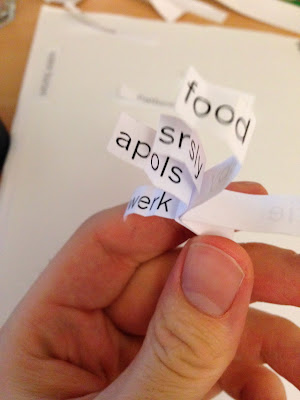This is somewhat a self-indulgent investigation more than just another blog
post. Though I have little idea where to categorise myself as of late in the design
world, I still go forward with an interest in type, and more to the point of
this investigation, printed type. So, recently I visited the old print works of
the London College of Printing, now London College of Communication. They had
some letterpresses, which had been around since the 1800’s, surely an argument
for the archetypal medium of print, right? No. They still work, and I am
reliably informed still used, by more than just students. A dying art, which I
cant help think is being pushed out for this whole ‘e-book’ revolution, though
some would say an ‘e-book scandal’. A scandalous bid to overtake printed books
that is.





An
article in the Guardian outlines another approach to this. ‘Are books dead, and can authors survive?’
(2011). This looks at the fact that an author being the sole publisher of this
book, their work is scripted, printed and bound into a fixed physical item. A
book. It goes on to comment on the fact that the a contribution to the demise
of the printed book would be the fact of communal books, ones that many people
can edit, teams, collaborations and what you could call, an endless
regeneration book.
‘Ebooks, in the future,
will be written by first-timers, by teams, by speciality subject enthusiasts
and by those who were already established in the era of the paper book.’
So, looking at the broad conscious on ‘the end of
print’, it’s not too clear whether the end is nigh, or not. There is however no
doubt a rise in electronic books, and as ever they come with their advocates
and critics. Even so, there is a sort of grounding in print that is not just
books, its more than that, it’s a medium of communication and such established
ways cannot be just simply discontinued, that as a practice doesn’t make sense,
no matter how ‘cutting edge’ we designers might be, or like to think we are.
Sort of blending into one another is the question of
interaction design. This method has more and more created a bridge for the
print world, and the need for fast updating digital hubs of information.
So, as argued by so many, the end of print is nigh.
But, say it isn’t. I see the fact that really, there are many layers to design,
to communication, and to that the business of communicating. Digital and
electronic records of information are another layer, another access point for
the user. Albeit to flex and change the information whenever and how they need.
This brings me onto the sense of print as a craft,
ignorant of the side of mass-market consumerism, and to that of purpose in
print. Tactile, useable, physical. This may all sounds quite the romantic
episode, and perhaps a little over the top for describing the processes of ink
to paper. However, the argument is that, maybe there is an end to mass-market
print? Maybe people will no longer want to walk down to the shop for a
newspaper, or bare witness to a torn poster on an ad board at the end of the
road. Maybe those are the sorts of people who want their information beamed to
their brain. Design is cleverer than that.




















































